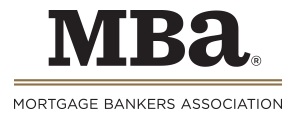WASHINGTON, D.C. – May 9, 2013 – (RealEstateRama) — The delinquency rate for mortgage loans on one-to-four-unit residential properties increased to a seasonally adjusted rate of 7.25 percent of all loans outstanding at the end of the first quarter of 2013, an increase of 16 basis points from the previous quarter, but down 15 basis points from one year ago, according to the Mortgage Bankers Association’s (MBA) National Delinquency Survey.
Non-seasonally adjusted delinquency rates typically decrease between the fourth and first quarters, and the delinquency rate decreased 76 basis points to 6.75 percent this quarter from 7.51 percent last quarter before accounting for the seasonal effect. On an unadjusted basis, the delinquency rate was 19 basis points lower compared to the first quarter of 2012 rate of 6.94 percent.
The delinquency rate includes loans that are at least one payment past due but does not include loans in the process of foreclosure. The percentage of loans on which foreclosure actions were started during the first quarter was unchanged at 0.70 percent, the lowest level since the second quarter of 2007, and was down 26 basis points from one year ago. The percentage of loans in the foreclosure process at the end of the first quarter was 3.55 percent, the lowest level since 2008, down 19 basis points from the fourth quarter and 84 basis points lower than one year ago.
The serious delinquency rate, the percentage of loans that are 90 days or more past due or in the process of foreclosure, was 6.39 percent, a decrease of 39 basis points from last quarter, and a decrease of 105 basis points from the first quarter of last year.
The combined percentage of loans at least one payment past due or in foreclosure was the lowest in over four years, decreasing to 10.30 percent on a non-seasonally adjusted basis, 95 basis points lower than last quarter and 103 basis points lower than the same quarter one year ago.
“On a seasonally adjusted basis, the overall delinquency rate increased this quarter, driven by a slight increase in the 30-day delinquency rate. Normal seasonal patterns are beginning to re-emerge, but as has been true post-crisis, it is still difficult to parse typical seasonal swings from true changes in performance. It is also important to note the decline relative to last year at this time. Regardless, we remain in a period of slow and uneven economic and job growth in the US and there are still many borrowers without stable, full time employment, or that are still unemployed. On a seasonally adjusted basis the largest increases in delinquency were in the subprime fixed and ARM categories, typically sensitive to income and payment shocks, and likely even more so in the current economic environment,” said Michael Fratantoni, MBA’s VP of Research and Economics.
“We are seeing substantial improvements in the foreclosure situation nationally and in many states. The foreclosure inventory measure decreased in 40 states, with states like Florida, California, and Nevada leading the declines. However, 33 states had increases in foreclosure starts, while the pace of decline in the 90+ day category has slowed in recent quarters, the 90+ day measure is now at its lowest since 2008. As with last quarter’s results, the reported improvement in the foreclosure situation may be slightly larger than stated because some large specialty servicers are not yet participating in the MBA survey.”
“States with a judicial foreclosure system continue to bear a disproportionate share of the foreclosure backlog. While the average percentages of loans in foreclosure dropped in both states with judicial systems and states with nonjudicial systems, the average rate for judicial states was 5.96 percent, triple the average rate of 1.99 percent for nonjudicial states. Both declined to recent lows, with judicial states seeing the lowest foreclosure inventory since the fourth quarter of 2009 and nonjudicial states seeing the lowest foreclosure inventory since the fourth quarter of 2007.”
“FHA loans, like most of the other loan categories, saw an improvement in delinquencies. However, it was the only loan type that had increases in foreclosure starts and inventories, which increased eight basis points and 11 basis points, respectively. The pre-2010 vintages continue to drive FHA serious delinquencies, with the 2008 and 2009 loan cohorts still accounting for 44 percent of seriously delinquent FHA loans even though they represent only 27 percent of FHA loans serviced. In contrast, the 2010 and later vintages made up 15 percent of seriously delinquent FHA loans, but are almost half of all FHA loans serviced. Foreclosure starts and inventory rates on subprime loans dropped sharply over the quarter and relative to last year.”
“Finally, last quarter we noted the adverse effects of Superstorm Sandy on the delinquency and foreclosure rates in the states that were affected. While forbearance is in place for many of the borrowers affected by the storm, we ask servicers to report these loans as delinquent if the payment was not made based on the original terms of the mortgage, regardless of the forbearance plans in place. New York, New Jersey and Connecticut saw overall decreases in total past due rates this quarter, in line with most other states in the nation, although the improvements in the 90+ day delinquency category were less than the national average. New York actually had a slight increase in 90+ day delinquencies. Foreclosure starts in New Jersey had declined across all loan types last quarter, possibly due to servicers suspending foreclosure activity as borrowers recovered from the impacts of the storm, but some of those decreases were reversed in the most recent quarter, likely on properties deemed not to be affected by the storm. We expect further improvements in these states as we move through 2013,” Fratantoni said.
Change from last quarter (fourth quarter of 2012)
The seasonally adjusted delinquency rate decreased two basis points to 3.77 percent for prime fixed loans and decreased 40 basis points to 7.62 percent for prime ARM loans. For subprime loans, the delinquency rate increased 97 basis points to 20.12 percent for subprime fixed loans and 138 basis points to 23.72 percent for subprime ARM loans. The delinquency rates for VA loans increased by 37 basis points to 6.34 percent while the FHA delinquency rate decreased by 20 basis points to 10.97.
The percentage of loans in foreclosure, also known as the foreclosure inventory rate, decreased from last quarter to 3.55 percent. The foreclosure inventory rate for prime fixed loans decreased 12 basis points to 1.98 percent and the rate for prime ARM loans decreased 73 basis points from last quarter to 5.95 percent. For subprime loans, the rate for subprime ARM loans decreased 197 basis points to 16.27 percent and the rate for subprime fixed loans decreased 54 basis points to 8.74. The foreclosure inventory rate for FHA loans increased 11 basis points to 3.96 while the rate for VA loans decreased 10 basis points to 1.98.
The non-seasonally adjusted foreclosure starts rate decreased three basis points for prime ARM loans to 0.94 percent, 10 basis points for subprime fixed to 1.72 percent and 55 basis points for subprime ARM loans to 2.31 percent. The foreclosure starts rate remained unchanged at 0.38 percent for prime fixed loans and 0.49 percent for VA loans while the rate increased eight basis points to 0.94 percent for FHA loans.
Change from last year (first quarter of 2012)
Given the challenges in interpreting the true seasonal effects in these data when comparing quarter to quarter changes, it is important to highlight the year over year changes of the non-seasonally adjusted results.
Compared with the first quarter of 2012, the foreclosure inventory rate decreased 61 basis points for prime fixed loans, 281 basis points for prime ARM loans, 174 basis points for subprime fixed, 528 basis points for subprime ARM loans, and 48 basis points for VA loans while increasing 13 basis points for FHA loans.
Over the past year, the non-seasonally adjusted foreclosure starts rate decreased 24 basis points for prime fixed loans, 81 basis points for prime ARM loans, 41 basis points for subprime fixed, 91 basis points for subprime ARM loans, two basis points for FHA loans and 16 basis points for VA loans.
If you are not a member of the media and would like to purchase the survey, please visit www.mortgagebankers.org/NDS or e-mail .
###
The Mortgage Bankers Association (MBA) is the national association representing the real estate finance industry, an industry that employs more than 280,000 people in virtually every community in the country. Headquartered in Washington, D.C., the association works to ensure the continued strength of the nation’s residential and commercial real estate markets; to expand homeownership and extend access to affordable housing to all Americans. MBA promotes fair and ethical lending practices and fosters professional excellence among real estate finance employees through a wide range of educational programs and a variety of publications. Its membership of over 2,200 companies includes all elements of real estate finance: mortgage companies, mortgage brokers, commercial banks, thrifts, Wall Street conduits, life insurance companies and others in the mortgage lending field. For additional information, visit MBA’s Web site: www.mortgagebankers.org.









